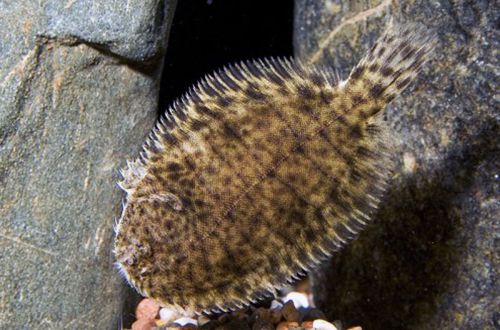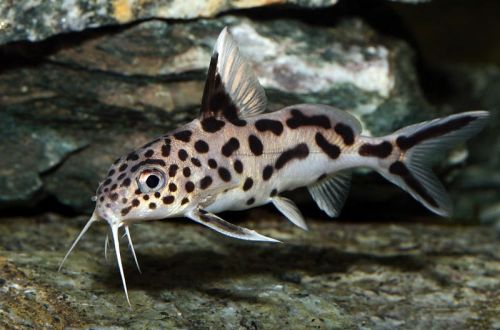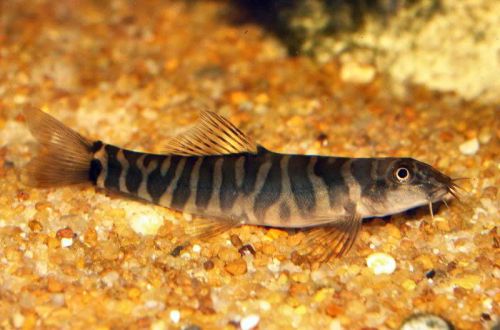
Freshwater flounder
Freshwater flounder, scientific name Brachirus panoides, belongs to the Soleidae family. The main feature of this fish is its appearance, which cannot be confused with anything. It is considered easy to keep, only feeding is difficult (more on this below), for this reason it is not recommended for beginner aquarists.

Contents
Habitat
It comes from Southeast Asia, is found everywhere from Thailand to Indonesia. They live in the lower reaches of rivers and estuaries (the place where the river flows into the ocean). They prefer to stay close to the sandy muddy bottom. They live in both fresh and brackish water.
Brief information:
- The volume of the aquarium – from 200 liters.
- Water and air temperature – 23-28°C
- Value pH — 7.0–8.0
- Water hardness – medium to high hardness (10-20 dGH)
- Substrate type – sandy, silty
- Lighting – subdued, dim
- Brackish water – yes, in a concentration of 5-8 grams. For 1 liter of water
- Water movement – little or no
- The size of the fish is about 20 cm.
- Nutrition – meat sinking feed
- Temperament – peaceful
- Content alone or in a group
- Life expectancy about 15 years
Description
Adult individuals reach a length of up to 20 cm. The fish has an oval disc-shaped body characteristic of other Flounders. They swim sideways with the help of undulating movements of the dorsal and anal fins, stretched from head to tail. The color is gray-brown with dark spots, speckles. The fish is on duty at the bottom, digging into the sand or mud, and due to this coloration it becomes almost invisible.
Food
In nature, they feed at night on various benthic invertebrates. The aquarium will accept fresh or frozen food, such as bloodworms, brine shrimp, pieces of shrimp and shellfish, earthworms.
Important! Feeding should be done late in the evening after the lights are out so that other fish do not eat all the food. Since the freshwater flounder is not very mobile, food should be placed directly in front of it, otherwise it may remain hungry.
Maintenance and care, arrangement of the aquarium
The optimal size of the aquarium starts from 200 liters. The design focuses on the substrate. It should consist of fine gravel or sand so that the fish have the opportunity to dig into it if necessary. Other decorations, such as driftwood, are welcome but placed on the sides to keep large open bottom areas.
The content of Freshwater flounder is quite simple. It is necessary to ensure a suitable hydrochemical composition of water and salinity levels and to prevent their strong fluctuations. High water quality is ensured by its weekly replacement of 25–50% of the volume, regular cleaning of the aquarium and a productive filtration system. The recommended salt concentration is 5-8 grams per 1 liter of water. Fish are sensitive to the amount of dissolved oxygen in the water, so place additional spray stones from the aerator.
Behavior and Compatibility
Peaceful calm fish is compatible with other non-aggressive species large enough to fit in a flounder’s mouth. Good neighbors will be fish that live in the water column or near the surface. It is worth avoiding the introduction of goltsov and catfish. They can live both alone and in the company of relatives.
Fish diseases
As a rule, diseases are the consequences of improper maintenance. For example, sharp and large soil particles can cause injury, neglect of feeding rules will lead to starvation, and prolonged exposure to water with unsuitable pH and dGH parameters depresses the immune system, etc. All this leads to infection with various pathogenic bacteria, fungus, infection with parasites. In some cases, the creation of suitable conditions will allow the body of the fish to cope with the disease on its own, however, in advanced cases, targeted treatment will be required. For more information on symptoms and treatments, see the Aquarium Fish Diseases section.





